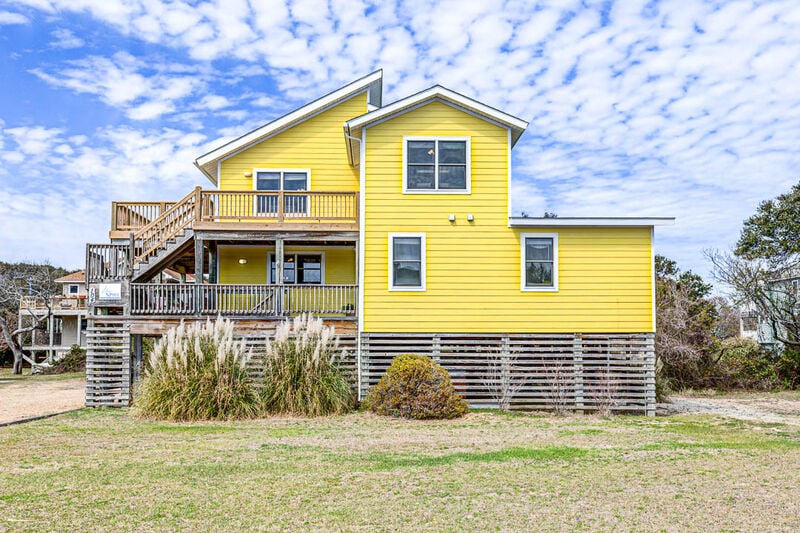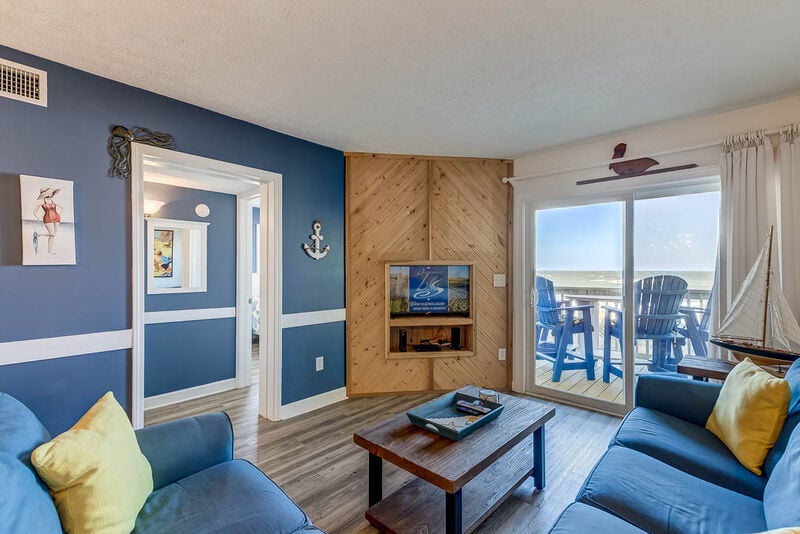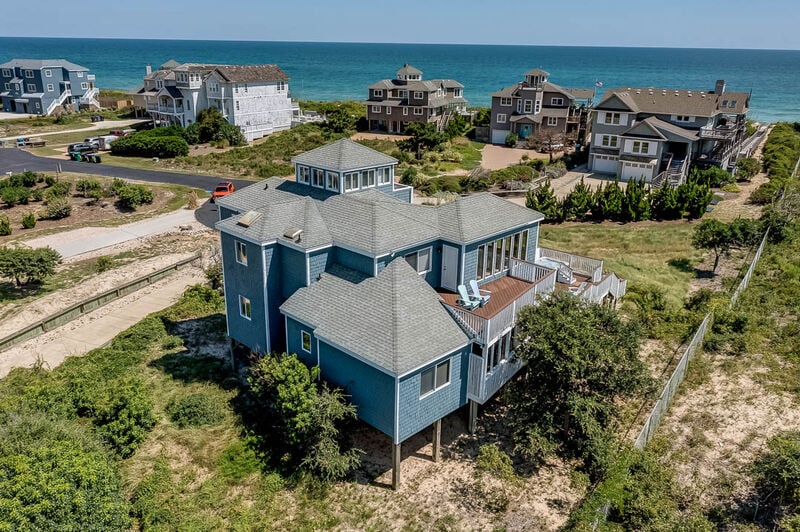
Occupying 39 acres in Corolla the Whalehead Club today anchors Currituck Heritage Park. The building, painted a startling shade of yellow, is considered an outstanding example of Art Nouveau-style of architecture and is listed on the National Register of Historic Places.
However, neither the beauty of the grounds and building nor a tour of the home—highly recommended—tell the full story of the Whalehead Club.
The Couple That Built The Whalehead Club
Edward Collings Knight, Jr. was the son of Edward Collings Knight. Knight patented a sleeping car for trains, and he when ultimately sold the patent to the Pullman Company, it made the family fortune (as well as their investments in sugar refining and transportation). Unfortunately, it seemed that Knight Jr. was better at spending money than making it.
Knight Jr.'s wife, Marie-Louise LeBel, was a French-Canadian woman, and was 12 years younger than Knight. LeBel was wealthy in her own right when she met her husband, and she was noted for her gala parties and her fierce advocacy of women's rights.
Why Build a 21,000 Square-foot Mansion in Corolla?
At the time, the waterfowl hunting on Currituck Sound was legendary, The Lighthouse Club, a hunting club on the Outer Banks, occupied the land the Whalehead Club does today. Knight Jr. visited the club a number of times during the time it remained open. He loved hunting - as did his wife, but their strict prohibition against women kept his wife away.
In 1919, the club dissolved and the land was sold to investors who planned on selling the property, but Knight bought the property in 1922 — approximately 2200 acres of land.
It Took Three Years To Build
Construction on the building began in 1923 and continued until 1925. There were a number of reasons for the lengthy construction - for instance, almost everything had to be shipped in, and the only way to get it to Corolla was by boat across the Currituck Sound. The complexity of the project also added to to the time.
However, if there is one overarching reason for the time spent to build the cottage — as Knight Jr. called it — it was that construction was only permitted when the couple were on hand to personally oversee what was happening. The Knights wintered in Corolla, but were not permanent residents, which mean that the cottage was only actively being constructed for 4 months out of the year.
When the cottage was completed, the cost was $383,000 — about $5.4 million in today's dollars.
However, if there is one overarching reason for the time spent to build the cottage — as Knight Jr. called it — it was that construction was only permitted when the couple were on hand to personally oversee what was happening. The Knights wintered in Corolla, but were not permanent residents, which mean that the cottage was only actively being constructed for 4 months out of the year.
When the cottage was completed, the cost was $383,000 — about $5.4 million in today's dollars.
The Original Name Was Corolla Island
According to documents filed to designate the Whalehead Club a National Historic Place, the Knights were meticulous about keeping a log of their new home's activities. During the 1923-24 hunting season, the name was changed from Lighthouse Club to Corolla Island.
The timing probably indicated that the dredging around the peninsula where the new home was being built was completed around that time and had turned the area into an island.
The dredge spoils were used to build up the land so that when the building was constructed, it would have a full basement — something rarely, if ever seen, on the Outer Banks.
The timing probably indicated that the dredging around the peninsula where the new home was being built was completed around that time and had turned the area into an island.
The dredge spoils were used to build up the land so that when the building was constructed, it would have a full basement — something rarely, if ever seen, on the Outer Banks.
Corolla Island Becomes The Whalehead Club
Edward Knight died in July of 1936 and four months later his wife passed away. Corolla Island, along with considerable other real estate holdings were mostly left to Edward's grandchildren...who had no interest in the living in or visiting the property.
The 1930s were the height of the Depression and there did not seem to be much interest in the property.
US Representative for northeastern North Carolina, Lindsey Warren, did tell his colleagues about the property and NY Congressman Sirovich agreed to purchase it for $175,000. The closing date was to be December 17 — the same day Congressman Sirovich suddenly died.
Ray Adams, a Washington, DC meat packer with considerable political connections, bought the property for $25,000 in early 1940. According to legend, Adams was clearing land on the eastern tip of the property hoping to build a landing strip. A whalebone found during construction inspired him to change the name to the Whalehead Club.
The 1930s were the height of the Depression and there did not seem to be much interest in the property.
US Representative for northeastern North Carolina, Lindsey Warren, did tell his colleagues about the property and NY Congressman Sirovich agreed to purchase it for $175,000. The closing date was to be December 17 — the same day Congressman Sirovich suddenly died.
Ray Adams, a Washington, DC meat packer with considerable political connections, bought the property for $25,000 in early 1940. According to legend, Adams was clearing land on the eastern tip of the property hoping to build a landing strip. A whalebone found during construction inspired him to change the name to the Whalehead Club.

WWII - The Coastguard
As German U-boats patrolled the North Carolina shoreline at the beginning of the US entry into WWII, guarding the Outer Banks became a priority and the Coast Guard asked Adams for the use of his property.
In 1942 he agreed, with the stipulation that his superintendent, Dexter Snow, would be stationed at the site and given the rank of chief bos'n mate so he could keep an eye on Adams' property. At one time there were up to 300 men stationed at the site.
In 1942 he agreed, with the stipulation that his superintendent, Dexter Snow, would be stationed at the site and given the rank of chief bos'n mate so he could keep an eye on Adams' property. At one time there were up to 300 men stationed at the site.
Before Its Time
After the war, Adams began thinking about how he could develop his Whalehead Club. He drew up plans for a resort community that included two motels, a shopping center and vacation homes.
The plans never made it off the drawing board. An inadequate — or barely existent — transportation system and lack of funds doomed the project. Ray Adams died at the Whalehead Club on New Year's Eve, 1957.
The plans never made it off the drawing board. An inadequate — or barely existent — transportation system and lack of funds doomed the project. Ray Adams died at the Whalehead Club on New Year's Eve, 1957.
Boys Summer School
The property sold quickly for $375,000 and the new owners were able to rent the Whalehead Club to a British private educational foundation that created the Corolla Academy, based on "...the firm conviction that summer study for boys of secondary level is a rewarding and enjoyable experience." The Corolla Academy survived for three summers before closing.
Rocket Science
Almost immediately after the school closed, the property attracted the attention of Atlantic Research Corporation (ARC). ARC was a rocket engine company doing research on beryllium as a fuel. As a fuel, beryllium has some real advantages; it's very powerful and it's relatively stable.
It does have some disadvantages, as well - primarily that it is extremely toxic.
What ARC needed was an isolated, sparsely populated area to conduct research. Corolla, with a population that struggled to reach 100 and no roads connecting it to the outside world, was perfect.
In 1964, ARC exercised a $1.25 million purchase option on the 2200 acre property. In 1969, recognizing that the toxicity of beryllium was too great a hurdle to overcome, ARC closed their operation and sold the property to real estate developers who began dividing the property into subdivisions.
It does have some disadvantages, as well - primarily that it is extremely toxic.
What ARC needed was an isolated, sparsely populated area to conduct research. Corolla, with a population that struggled to reach 100 and no roads connecting it to the outside world, was perfect.
In 1964, ARC exercised a $1.25 million purchase option on the 2200 acre property. In 1969, recognizing that the toxicity of beryllium was too great a hurdle to overcome, ARC closed their operation and sold the property to real estate developers who began dividing the property into subdivisions.

Currituck County Steps In
In 1988, NCDOT completed NC 12 to its current terminus north of Corolla and a building boom followed. The Whalehead Club remained largely untouched after ARC left, a slowly decaying magnificent artifact of a different era.
In 1992, Currituck County purchased the Whalehead Club and 35 surrounding acres at a bank auction and began the process of restoring the property. By 2002, the restoration was complete.
In 1992, Currituck County purchased the Whalehead Club and 35 surrounding acres at a bank auction and began the process of restoring the property. By 2002, the restoration was complete.
Visiting the Whalehead Club
The Whalehead Club is part of Currituck Heritage Park that includes the Knight's cottage and the grounds. Immediately adjacent to the park, and worth a visit, is the Currituck Beach Lighthouse and the Outer Banks Center for Wildlife Education.
The Center for Wildlife Education contains a small but wonderful museum that traces the history of hunting on the Currituck Sound, and the view from the top of the Currituck Beach Lighthouse is spectacular - well worth the effort of the climb.
The Center for Wildlife Education contains a small but wonderful museum that traces the history of hunting on the Currituck Sound, and the view from the top of the Currituck Beach Lighthouse is spectacular - well worth the effort of the climb.
Stay Nearer to History When Visiting the Beach
To fully experience the magic of Corolla and the rich history of the Whalehead Club, consider planning an extended stay in the area. With a wide range of Outer Banks vacation rentals available, you can find the perfect home base to explore Currituck Heritage Park, the Currituck Beach Lighthouse, and the surrounding coastal beauty. Companies like Outer Banks Blue offer exceptional rental options to make your visit as comfortable and memorable as possible, ensuring you can relax and soak in all the wonders of the Outer Banks.







